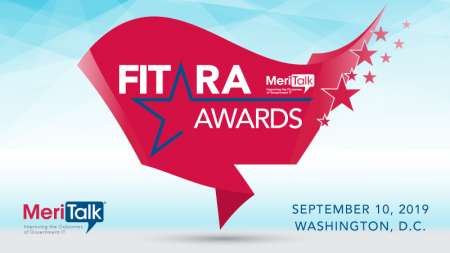
Several Federal IT industry stalwarts offered praise today for the important role that FITARA (the Federal Information Technology Acquisition Reform Act) has played in pushing Federal agencies toward greater IT modernization, and for the opportunities for further progress that the House Oversight and Reform Committee’s FITARA Scorecard helps to clarify for Federal CIOs.
Process Yields Improvements

Several officials talked about the value of FITARA’s core attribute – illuminating Federal agency progress on key IT improvement initiatives.
“Do we spend too much or not enough on IT – and what’s a reasonable return on investment,” asked Steve Harris, Senior Vice President and General Manager, Dell Technologies Federal, which sponsored MeriTalk research into the effectiveness of FITARA. “To answer these questions, we need to get a clear picture of the real Federal IT spend – that’s why FITARA’s so important. It empowers CIOs with the responsibility for agencies’ IT spend – and requires that CIOs report to the head of the agency.”
“After five years of FITARA we see great strides across the Federal Government in modernizing IT while reducing costs,” said Bob Osborn, Chief Technology Officer for Service Now (Federal). “As we move forward, agencies will be challenged to continue to improve in the ever-changing landscape of technology advancement. The role of the CIO is now clearly empowered and can now direct enterprise level service delivery which will ultimately achieve the vision of FITARA.”
“While improved scores are noteworthy, what we see as most encouraging is the increasing emphasis on measuring progress that FITARA brings. The fact that “every agency has room for improvement” should not come as a surprise – that will always be the case,” said Chris Jensen, Federal Business Development, Tenable Public Sector.
“FITARA is proof that the federal government is thinking meaningfully about IT modernization, the cloud, cost transparency, and creating better digital services,” said Tony Franzonello, Vice President of Federal Sales, Alfresco. “Many agency grades are trending positive, which means those priorities are reaching the highest levels of government – from CIOs to the heads of the agencies. Alfresco applauds the work Congress, GAO, and OMB have done with FITARA. As government agencies embrace more modern, open technologies, they will create a better working world for public servants and better experiences for citizens.”
“I applaud OMB for addressing issues such as definition of a data center and cleaning up the performance metrics for compliance,” said Jeffrey Chabot, Director-Government Segment at Schneider Electric IT Federal. “Going forward, I look forward to the new scorecard in December with DCOI once again graded with these new metrics,” he added.
“We are pleased to see overall agency progress in implementing FITARA, as shown in the release of the eighth FITARA scorecard,” said Matt Krupnick, public policy director, government affairs, Red Hat. “The transparency provided via the scorecard keeps agencies focused on a host of critical government IT issues. Congress should be congratulated for their effective use of oversight to change agency behavior.”
DCOI Policy
Industry officials touched on some of the overriding themes of the Scorecard 8.0 released by the House committee yesterday, and hammered home by members of Congress at a hearing of the House Government Operations Subcommittee.
On what’s next for the government’s Data Center Optimization Initiative policy, Nick Psaki, Federal CTO, Pure Storage, said, “In the face of the realities of carrying forward the DCOI statute, the realities of these efforts are now being re-assessed, and the policies of OMB are now tailored to support implementing the spirit and intent of the law with regard to the practical realities of modernizing the world’s largest IT enterprise.”
He continued, “A rationalization and re-assessment of the measurable criteria of DCOI is proper as the process matures. Excluding relatively insignificant facilities like server closets makes sense, and focusing a baseline threshold of 100k watts where improvement has a significant savings impact makes good sense. Improvements at these sites really moves the needle in terms of cost impact. The remaining small implementations will likely consolidate on their own as the larger infrastructure improves and is able to address the needs of the ‘microsites,’ or specific tailored capabilities that support spot use cases, like MRI machines.”
“It is critical that power, space and cooling metrics remain central to assessing the efficacy of DCOI efforts,” Psaki said. “The real reduction in facility and power consumption costs are at the heart of consolidation, transformation and modernization efforts. Utilization and availability are measures of effectiveness, whereas energy and facility utilization are measures of efficiency. Both need to remain part of a balanced optimization strategy, and should be tracked and reported.”
“HPE is pleased to see the continued support and oversight by Congress on the Federal Government’s IT Modernization effort and agrees with the new DCOI guidance from OMB,” said Bill Burnham, US Public Sector CTO, HPE. “Government agency missions vary widely and may require different solutions to achieve the optimal result. OMB shifting focus to application rationalization, while allowing the cloud technology adoption options to include private on-prem cloud and hybrid cloud computing models will enable agencies to adopt the cloud computing solution that best fits the mission. We applaud OMB updating the DCOI to reflect the reality we see in the private sector, charting the next steps to data center optimization in Federal IT.”
“Successful digital transformation is highly dependent upon agencies’ ability to innovate and improve the way they deliver on their missions, so it’s exciting that more and more agencies are beginning to leverage the benefits of cloud-based platforms to better serve their various customer audiences,” said Darryl Peek, Senior Manager, Strategy & Business Development, Public Sector North America, at Salesforce. “Based on updates to the DCOI policy, it would appear that more emphasis is being placed on understanding performance metrics and providing greater levels of transparency. To that end, we recognize that trust is a critical measure of success for government organizations and the inclusion of FISMA in the latest scorecard is an encouraging indicator of a continuing commitment to maintaining the trust of those of us who benefit from government services.
Red Hat’s Krupnick also weighed in on DCOI policy, saying, “There continues to be room for improvement in areas such as data center optimization. In this area it is particularly important to recognize that it’s not just about consolidating our existing data center infrastructure, but in giving agencies the flexibility to make the right cloud decision to meet their individual needs.”
“Data centers should be optimized for reality of hybrid cloud infrastructure to make the most of invested IT resources,” he said. “Agencies must be able to move workloads among various environments and manage them seamlessly – to achieve improved citizen services and cost efficiency.”
Security Policy
On the security front, Tenable’s Jensen added, “Perfection is unattainable, therefore consistent improvement is the goal.”
He continued, “Similar initiatives, such as the AWARE (Agency-wide Adaptive Risk Enumeration) cyber risk management tool being introduced in the DHS Continuous Diagnostics & Mitigation program, reflect that objective. When it comes to cyber risk, ‘how are we reducing exposure over time’ is one of the primary questions every CISO should be asking. These types of initiatives are key to helping answer that important question.”
